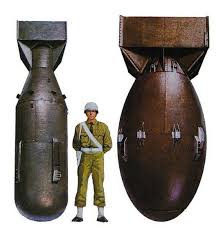
Vector
@withvector
During WWII, America built two secret cities with a workforce of 130,000 people. All to make bombs no one knew existed. You’ve heard about the Manhattan Project—but do you know the lengths they went to keep it hidden? This is how they hid the bomb that changed the world:
The Manhattan Project began in 1942 as a top-secret U.S. mission to develop nuclear weapons. Its goal? Harness atomic energy for military use before anyone else. Over 130,000 people worked on this project.
Scientists led the charge and military leaders coordinated the massive operation. The name “Manhattan Project” was inspired by its first office location: NYC. But this wasn’t a city-bound operation. To achieve the impossible, they needed vast, isolated facilities.
The mission? Build bombs using either uranium-235 or plutonium. Uranium ore was sourced from Congo and Canada, while plutonium—an entirely new element—had to be synthesized. Processing these materials was no small feat.
The U.S. created two secret cities: Oak Ridge, TN for uranium enrichment Hanford, WA for plutonium production. Thousands of workers lived in these cities, often not knowing what they were contributing to.
At Oak Ridge, the focus was on uranium. Scientists used experimental methods like gaseous diffusion and electromagnetic separation. One challenge: Uranium-235 makes up only 0.7% of natural uranium. Extracting it was painstaking work.
At Hanford, the focus shifted to plutonium. Here, chemical separation techniques were used with nuclear reactors built entirely in secret. These facilities required new levels of industrial engineering and secrecy.
Secrecy was the cornerstone of the Manhattan Project. Uranium ore traveled across oceans. Bomb components were shipped in pieces. Workers were told only what they needed to know. Even Vice President Truman wasn’t informed until he became president in 1945.
By mid-1945, the Manhattan Project had cost $2 billion (around $30 billion today). It built entire towns, advanced nuclear science, and brought together some of history’s greatest minds—like Oppenheimer and Fermi. But many scientists were uneasy.
They argued secrecy stifled collaboration and moral debate. After 3 years of relentless work, the project produced two bombs: “Little Boy” (uranium) “Fat Man” (plutonium) Before their use, they conducted a test—Trinity—on July 16, 1945, in the New Mexico desert.
The Trinity test used a bomb similar to “Fat Man,” suspended on a steel tower. When it detonated, the explosion was equivalent to 21 kilotons of TNT. The flash blinded observers 10,000 yards away.
The heat vaporized the steel tower and turned sand into radioactive glass, later named “trinitite.” The test proved the bombs worked. But the aftermath would show their devastating power. On August 6, 1945, “Little Boy” was dropped on Hiroshima.
Three days later, “Fat Man” was dropped on Nagasaki. Tens of thousands died instantly. Thousands more succumbed to burns, radiation, and injuries in the following months. The Manhattan Project was a scientific and logistical milestone.
Coordinating people, materials, and secrecy across continents demonstrated humanity’s capacity for monumental achievement. But it also forced a reckoning with the destructive power of innovation. The project changed the course of WWII and redefined global power.
Yet, it left behind haunting questions: Could the same goals have been achieved through diplomacy? At what cost does progress come? The Manhattan Project reminds us that the greatest achievements often leave behind the heaviest burdens.
At Vector, we have built a team of top technologists fundamentally rethinking how tools in logistics should work. Follow for more latest insights in supply chain technology. https://www.withvector.com/













